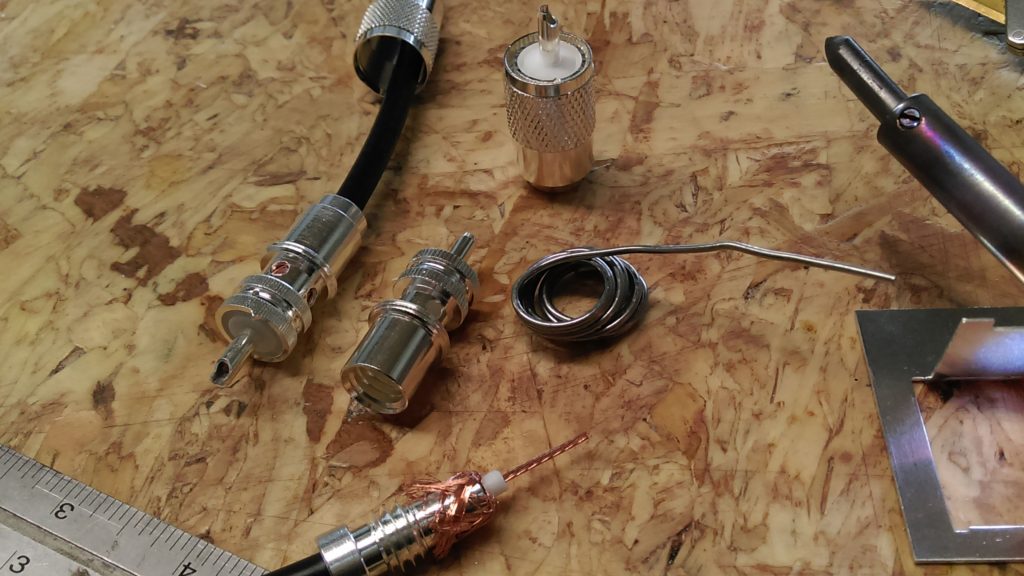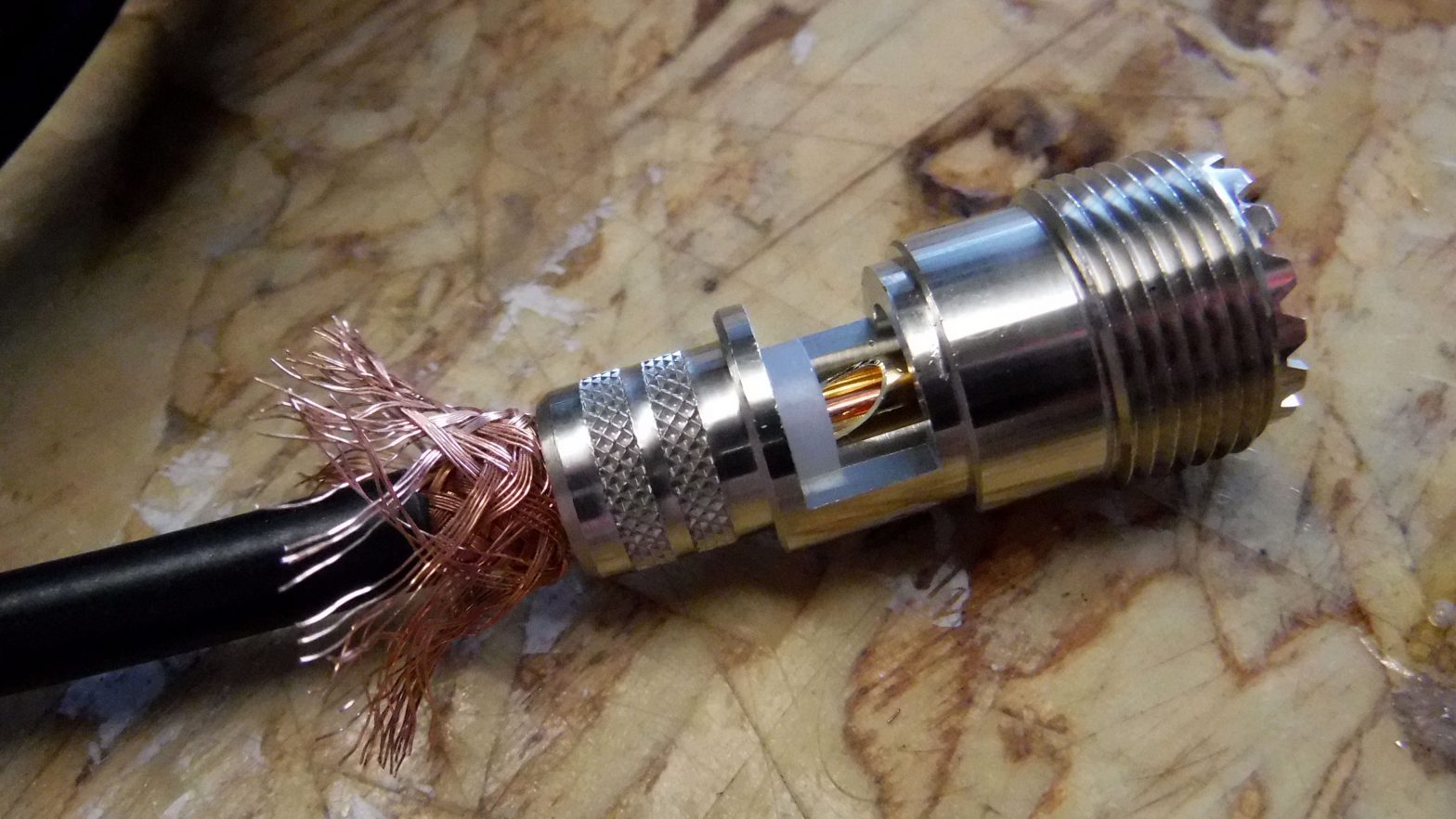One thing that often gets overlooked is the effect that frequency has on how much signal loss occurs in coax.
On the HF bands you almost don’t have to worry about your choice of coax. As long as the coax can handle the watts you are running you’re good to go. On VHF and especially UHF the situation changes.
Losses
Consider the following table:
| Coax | Loss (dB/100′) | Power Out (25″ run) | Power out (75′ run) |
| RG-58 | 6.5 | 17 W (68%) | 8.5 W (34%) |
| RG-8X | 4.7 | 19 W (76%) | 11 W (44%) |
| RG-213 | 2.8 | 21 W (84%) | 15 W (60%) |
| LMR-400 | 1.5 | 23 W (92%) | 20 W (80%) |
That can be a LOT of loss! The chart above assumes a frequency of 150 MHz, but as you go up in frequency the situation becomes worse and worse.
Overcompensating
At this point in the conversation a common response is,
You don’t have to worry about losses that much. Just increase power and you will compensate for the loss in the coax.
That is partially true – you could increase power to compensate for the loss on transmit. But what about on receive?
It is important to remember that coax losses go both ways. If you are losing signal power when transmitting then you are also losing it on reception. You can run all the power you want to “compensate” for loss in coax, but you will still be left with the issue of not being able to hear weak signals.
In some cases those weak signals will, quite literally, be fading out in the coax before they ever reach your ears. As the saying goes, “If you can’t hear ’em, you can’t work ’em.”

A Weak Signal Approach
So what are we supposed to do? Do we need to run hardline and heliax just to get by? The answer is definitely not. In most practical installations there is a coax type that will do the job properly without resorting to highly specialized materials.
The first thing is to analyze the run that you have planned. Is there a way to make that run shorter? Could your end point (antenna) or start point (station) be brought closer together? Carefully analyzing the route can often yield savings of tens of feet, resulting in lower losses and allowing a more practical size of coax.
You don’t have to be afraid of the losses in coax on VHF – you just need to be aware of them. With a little planning and a good coax selection you can both transmit strong and receive well.
Now that you have a background in radios, antennas, and coax continue on to see some examples of how to put it all together.
